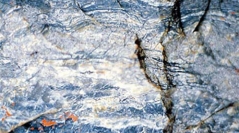

 Comptes Rendus Palevol
2 (6-7) - Pages 485-501
Comptes Rendus Palevol
2 (6-7) - Pages 485-501Stephen Jay Gould (Full House, Harmony Books, New York, 1996) emphasised the importance of the bacterial (prokaryote) world right from the beginnings of the history of life, up to the present day and, even into the future. Moreover, he suggested that the various forms of life on the planet today represent a diversification, or increase in complexity, from these simple organisms, rather than a directed evolution towards complexity. On the scale of evolution, the oldest fossils, dating back to almost 3.5 billion years ago, comprise simple unicellular organisms, i.e. prokaryotes that occur adjacent to the left wall of complexity. As far as can be ascertained from the fossil record, this early life had already exploited all the possible ramifications of diversification within an anaerobic environment and within the habitats available on the early Earth. Further evolution from this stage involved the development of organisms undertaking oxygenic photosynthesis that opportunistically invaded the newly formed, sunlight-bathed, shallow water continental platforms.
Gould, prokaryotes, evolution, Early Archaean, Pilbara, Barberton, cherts, microbialites, stromatolites